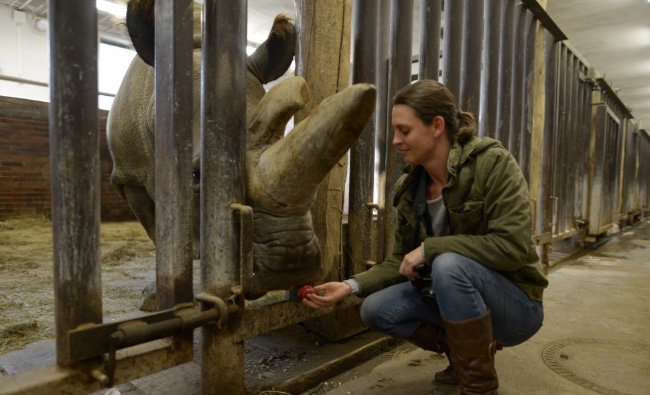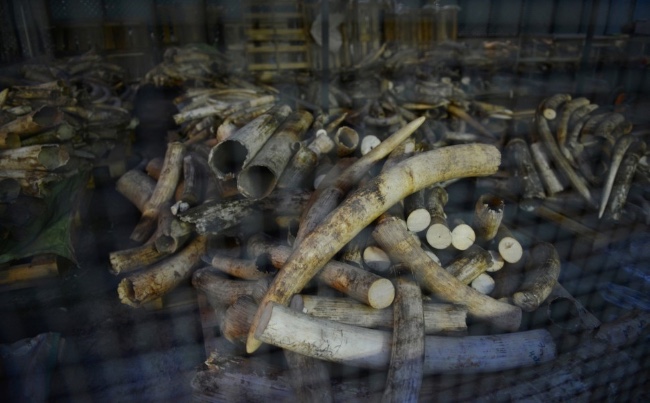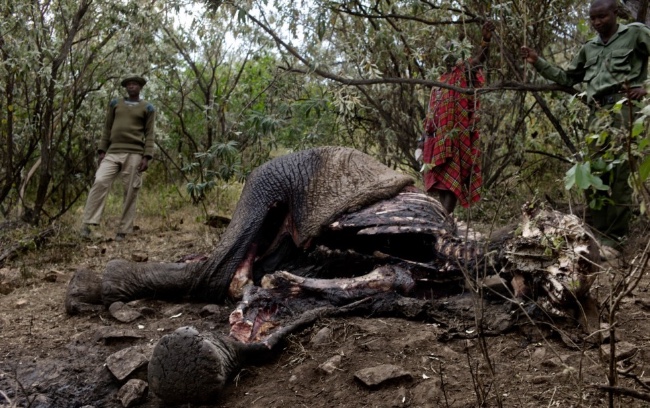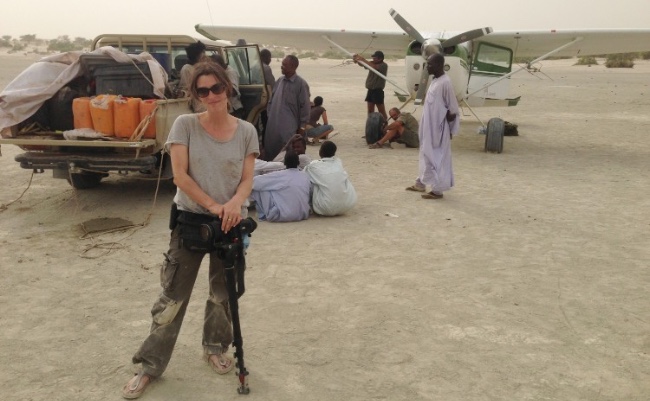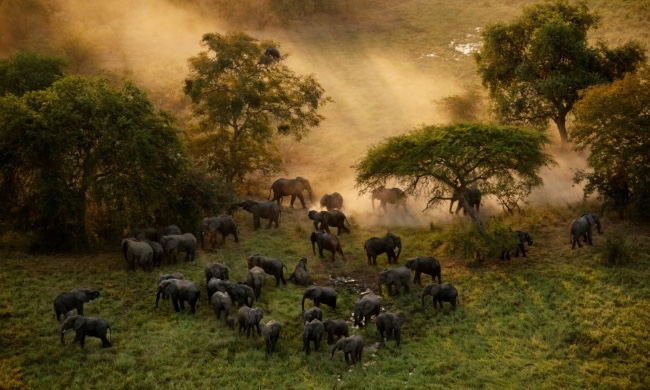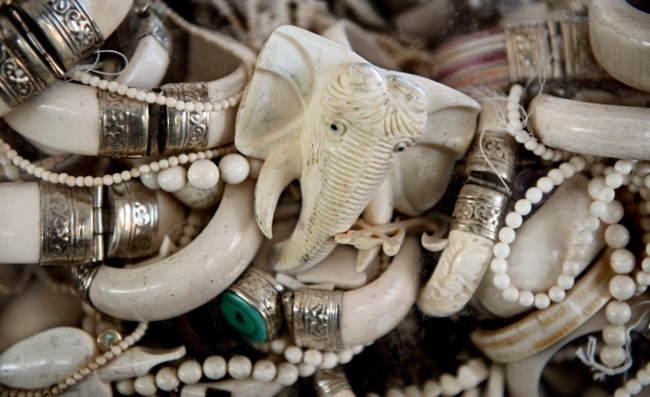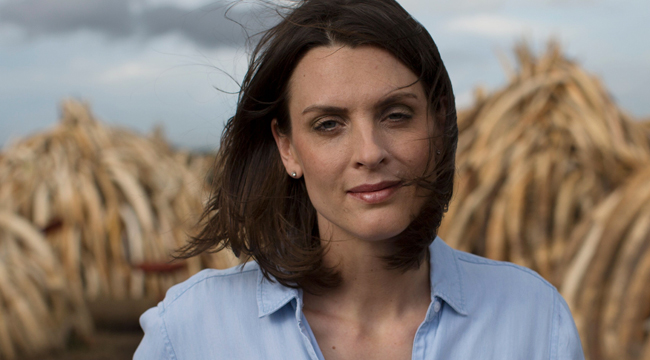
I first met Kate Brooks when I moderated a panel that she was speaking on at the Sun Valley Film Festival, but I knew her work long before that. Living in New York City on and after September 11th, 2001, left me feeling particularly raw about that moment in history. Like many people who witnessed the devastation first hand, I developed a very narrow view of the tragedies of that day. It was Kate’s work that helped me break out of my myopia. Her photos of Afghanistan and later Iraq (published in Time, Newsweek, The New York Times, The Wall Street Journal, and The New Yorker, among others) widened my lens and helped me to understand the endless layers of collateral damage created by the “War on Terror.”
In photojournalism circles, Brooks is a legend. Not just for her work (though very much for that, too), but also for her deep commitment to illuminating important, agonizing, too-often untold stories. She outlasted scores of colleagues in a harrowing field and is known for a sort of mental toughness that can’t be faked. In person, she exudes a quiet confidence and deliberate thought process that never fails to see the bigger picture.
Brooks’ newest project is a documentary focused on the last two living Northern White Rhinos and the broader problem of elephant and rhino poaching, titled The Last Animals. It’s a departure for her, in that it’s based around animals rather than humans, but her unflinching approach is very much intact. The documentary tells stories of illegal wildlife trafficking, black market trading, and ranger attacks that will leave you disquieted.
After being purchased by National Geographic, The Last Animals, already a festival darling, is sure to find a wider audience. In order to make sure the buzz translates into action, Brooks developed a portal for anyone eager to get involved with the cause. On the eve of its Earth Day premiere, Kate and I spoke about her movie, her career arc, and her abiding commitment to creating change.
So, first of all, tell me how your career began, and about that initial risk you took after September 11th to move to Afghanistan and start telling stories visually.
I was a Russian major in college, but I also discovered photojournalism and knew very, very early on that I wanted to be a photojournalist. My first documentary photography project was documenting child abuse in Russian state orphanages back in 1997-1998.
I then worked as a photographer in Russia for about three years. When 9/11 happened, I was living in Moscow, and was sent from there to Pakistan for what was supposed to be a few days’ assignment. After arriving, at 23, I decided very quickly to relocate so that I could fully devote my attention to covering what was happening in Afghanistan and the geopolitics in the region.
You very quickly went from not having a ton of experience, to all of a sudden being in the most famous outlets in the world as a vital storyteller in the post-9/11 era. Was that a heady experience for you — just wild how fast everything came together? Or is that just a result of a creative person taking a big risk?
That’s a good question… probably both. I wanted to see things with my own eyes and was the only photographer in the world to move to Pakistan at that time. A lot of people were coming and going, but I relocated so that I could stay focused on Pakistan and Afghanistan. What that meant is that I quickly became a go-to photographer while my work and ability were simultaneously being recognized.
It created a ton of opportunity. Being 24 and having spreads in Newsweek, Time, and The New York Times magazine all in the same week, for example, was pretty extraordinary as a storyteller. I think it still would be today.
Of course. So now, this has been your life for nearly 20 years, right? But then you pivoted your focus.
Pakistan and Afghanistan expanded into Iraq, Lebanon, Syria and beyond for about 15 years. I started to pivot my focus in 2010 after I did a medevac embed in Afghanistan for The Wall Street Journal. It was a very bad time in the war, when there were a lot of IED attacks.
Days after that assignment, I went to Kenya for the first time on a scheduled vacation. Seeing elephants in the wild for the first time helped heal me from the inhumanity I had witnessed and inspired me to want to focus on wildlife and environmental issues.
In a way, what you’re describing is these animals healing you from long term PTSD from being a war photographer?
Well, thankfully I don’t have PTSD — that term gets kind of thrown around a lot.
I get that, I didn’t mean to assume —
But the experience definitely helped me to process some traumatic stress, so it did not develop into PTSD. I recognize that — and it’s why I have worked so hard to give elephants back some of the peace and solace they gave me — through telling their story.
I also think I reached a point where covering human conflict started feeling quite futile. It was as if I was taking many of the same pictures over and over again and the region was slipping further into insecurity and conflict. I felt with wildlife trafficking I might actually be able to make a difference.
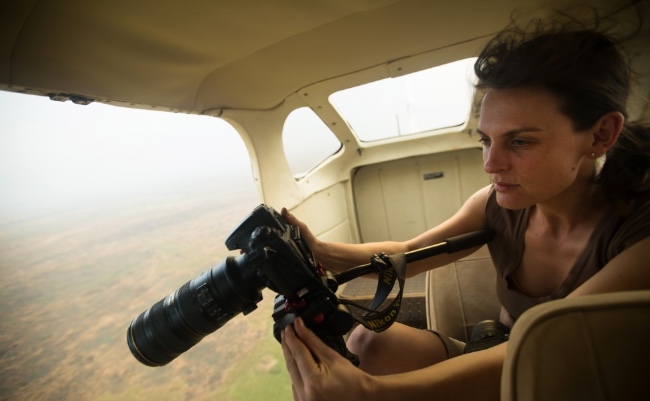
So, you transitioned over, and then let’s talk about The Last Animals. I’ve talked to you about it before. I’ve seen it. I deeply enjoy it. How did you find the story that you wanted to tell about the last Northern White rhinos, about the idea of this iconic, incredibly iconic, species potentially going extinct?
So, I knew that I wanted to focus on wildlife, but I was also known as a photographer specializing in the Middle East, kind of labeled as a war photographer, and so the transition was a bit of a process.
I applied for the Knight-Wallace Fellowship at the University of Michigan. I was accepted in 2012-13 as the environment fellow and during that time started researching what eventually became The Last Animals. The head of the fellowship initially discouraged me from focusing on poaching, but in the same time frame, another department of the University of Michigan reached out to me, and encouraged me to look at the connection between the ivory trade and terrorism, given my background in conflict. That resonated with me.
I had a lot of conversations at the time with my advisor about how to tell this story. I felt very, very strongly that this project had to be a film — to provide people with an immersive, emotive experience to understand issues that they might not otherwise understand or connect to with their heart. I had never directed a film before, just contributed to the making of another documentary film. But my advisor believed in me and encouraged me.
While the plight of the Northern White rhinos was briefly touched upon in our seed funding grant, I saw myself going off and telling a story about elephants and the ivory trade. But when I got to Kenya to do my initial research, I ended up staying at Ol Pejeta Conservancy, where the last two Northern White Rhinos on the planet currently live. At the time, there were just seven left on the planet between Kenya, Czech Republic, and San Diego! I was fascinated by their story and also fell in love with baby rhinos. As time went on, I recognized that the ivory trade, terrorism, and the extinction of Northern White Rhinos in the wild intersected all in one place.
One of the things I find so interesting about this piece of work is that it is constantly tied into a message of creating grassroots activism and urging people towards action. It’s not just a story that says, “Okay watch, and then walk away.”
Was that always part of the plan? And then, what are you doing to help people carry this story forward?
Passion and a deep desire to make a difference and create a piece of work that would help endangered species and the people who put their lives on the line to protect them is what fueled this project. It’s about going beyond raising awareness, it’s about inspiring action. You know, not all films have a social impact component, but this film does.
The Last Animals has been screened around the world from Tribeca to Texas and from Africa to Asia in theatrical, private and community screenings. Across the world, I can say that people want to do something when they see the film.
I spent a lot of time thinking about ways to provide viewers with a platform to take action. There is so much that can be done with very little effort. We have a take action tab on our website which gives people easy access to a variety of pieces of legislation they can support that will help protect the planet’s last animals. In the US, they can also text “lastanimals” to 52886.
I also set up The Last Animals Foundation which is focused on helping the children and families of rangers in ecosystems plagued by conflict and insecurity. We’re currently fundraising for a new school and community center in Garamba National Park. The park is featured in the film and is one of the most isolated places on the planet — situated on the border of South Sudan. It’s also one of the most important for conservation sites because it has the single largest remaining elephant population in central Africa. I think most people automatically imagine huge numbers of elephants. But there are around 1,200 left in a park on the size of Delaware. And when you consider that when I was born, there were 22,000 —
Wow.
It drives home how quickly extinction is happening. There are more than a dozen African countries that have elephant populations that are on the verge of collapse. The Last Animals is a foreboding tale of what happens when too little is done too late.
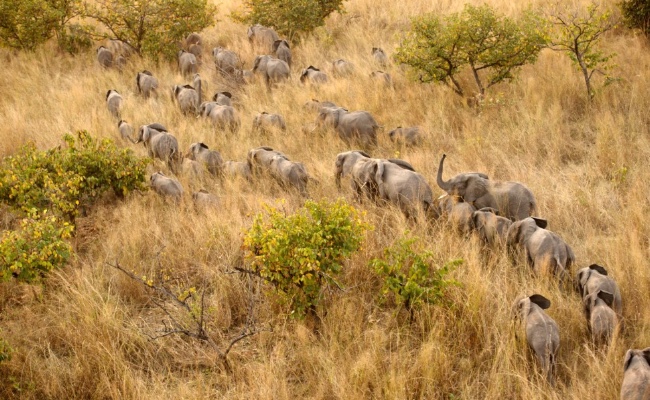
I feel like you’re in this interesting position. When I spoke with you at the Sun Valley Film Festival, I was struck that you’ve accomplished so much in such a condensed amount of time. And you have a larger platform than many. What do you wish you could say to young people who are watching the movie, who are thinking about their own places in the world and their own role in conservation?
It’s absolutely critically important that people get actively involved. Part of the reason why I partnered with a tech company was to give people an easy way to connect with pending state and federal bills that stop the ivory and rhino horn trade, clamp down on wildlife trafficking, and protect endangered species. There are only nine states that have enacted ivory and rhino horn bans. There are 41 states in which people can actively support ivory and rhino horn bans in their state as well as the District of Columbia.
So, I’d love to wrap up by talking about the soundtrack of the movie because I think it’s so incredibly cool.
I wanted to do a meaningful end credit song for The Last Animals. So, I reached out to a hip-hop musician named Emmanuel Jal. His personal story is, in many ways, relevant to the movie. He was forced to be a child soldier and ended up in a refugee camp, and is now an internationally recognized hip-hop musician and peace activist.
And because Garamba National Park borders on South Sudan and Emmanuel had composed an amazing song called War Child, that I just loved, I approached him about the possibility of composing an end credits song for The Last Animal. Given that the park has been victim to human conflict, I hoped he would be inspired to contribute.
He composed a chant called, “Hold My Soul” as well as the end credits song. Sadly, we had to record the latter after Sudan, the last male Northern White rhino, died last year between our festival premiere at TriBeCa and the TV broadcast. That’s why there are two versions: one dedicated to Nola who lived at San Diego Zoo Safari Park — leaving just 3 Northern Whites on the planet and one dedicated to Sudan — leaving just two left.
The lyrics of the song are a tribute to the Northern Whites, but they also encourage people, “Go be the leader. Be the change.” That’s what we tried to leave people with. Lobby your village, your nation, or just listen to the song knowing the proceeds go to the foundation and will help build a new school for the children of conservation hero. Do something to protect the last animals on the planet.
[protected-iframe id=”ef3e5775e466c87ca51975c7ae723fc3-60970621-76566046″ info=”https://open.spotify.com/embed/user/ans957/playlist/5sQwoDrR2zlwwMeO3ySHkL” width=”300″ height=”380″ frameborder=”0″]
The Last Animals can be found On Demand and at NatGeotv.com. Want to help? Visit The Last Animals’ website or text “lastanimals” to 52886 to be connected to a number of pieces of legislation that relate to the issue.
More photos — Warning, one image contains a deceased elephant after having been poached.
